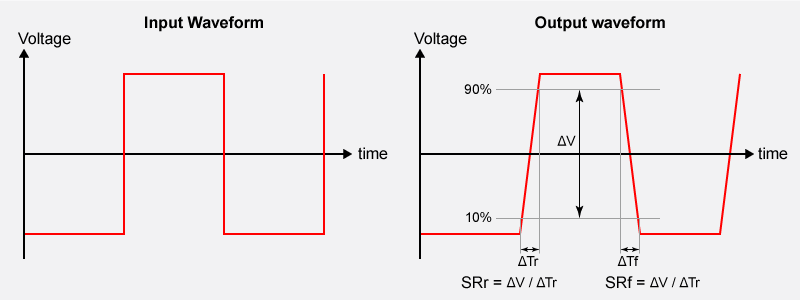Slew Rate is a measure of the frequency characteristics of a power supply.
For example, in high-voltage amplifiers, slew rate is used as a performance indicator that represents the speed at which the input signal is tracked at high voltages. This indicates how much the output value can change per unit of time when the input value changes.
For example, when a pulse signal is input, ideally the same pulse signal should be output, but in reality there is a limit due to the slew rate, and the output waveform will be a trapezoidal shape with a ramp slope. The slew rate indicates the ramp slope of this trapezoid.
The slew rate is based on the slower of ramp up and ramp down.
In a high-voltage amplifier, a signal with an input voltage of 1 V is amplified to 10 kV, etc., for output. If the signal is a sine wave and the slew rate is 10000V/sec, the rise time will take 1 second. Therefore, high-voltage amplifiers are required to have high slew rate performance.



